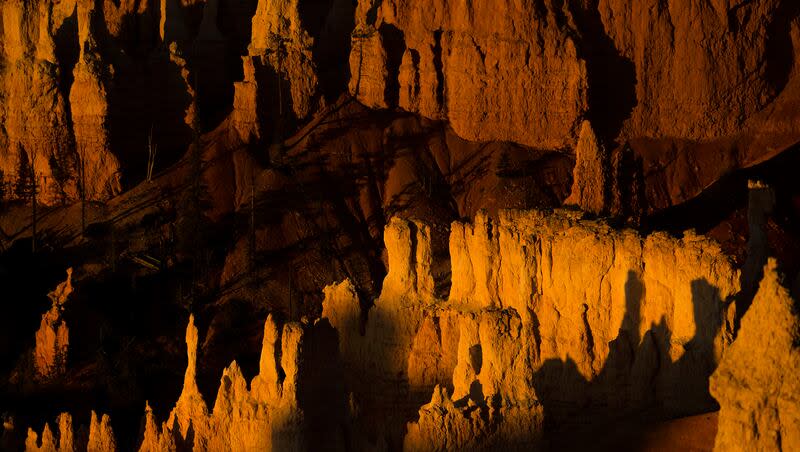Are we loving our national parks too much?

As Memorial Day approaches, many outdoor enthusiasts are planning their annual visits to America’s national parks. But this summer, travelers may find that their beloved parks have been loved a little too much.
In recent years, visitation to national parks has soared to new levels. In 2021, four of Utah’s Mighty 5 parks reached record visitation. The National Park Service reported more than 325 million visits to parks in 2023, an increase of 13 million from the previous year. Additionally, recreation visitor hours reached 1.4 billion, a 4% annual increase.
A surge in visitation also means a burden on park facilities. At some parks, amenities suffer from neglect, with dilapidated bathrooms, deteriorating roads and neglected campsites becoming all too common sights. This not only detracts from the visitor experience but also poses long-term risks to the integrity of our parks. Currently, the National Park System is staring down more than $23 billion in overdue repairs, known as the deferred maintenance backlog, a figure that has ballooned over the past couple of decades.
While the maintenance backlog has received lots of political attention, and rightly so, it’s just one aspect of the challenges facing parks today. Park lovers and policymakers need to think about innovative solutions that will help our parks thrive. The bipartisan Great American Outdoors Act of 2020 was a major legislative step to help address the backlog. This legislation allocated significant funding to specifically tackle deferred maintenance needs through the Legacy Restoration Fund, providing up to $1.9 billion annually until 2025. However, with the potential reauthorization of this funding looming next year, there is an opportunity to rethink how we care for our parks. And routine maintenance is vital to how we think about park upkeep.
When a maintenance task isn’t done within its scheduled time frame, it becomes deferred maintenance. When cyclical tasks like reinforcing structures, replacing parts or resurfacing roads are put off for years, their conditions worsen. Ultimately, it takes more labor, time and resources to fix them. Addressing maintenance needs in a timely manner is essential to extending the life of park assets and ensuring visitors have the best experience possible. And any maintenance that is punted down the line adds to the backlog and distracts from addressing new needs.
To keep up with park maintenance, we’ll need to be creative. For example, we could allow public lands managers more freedom to work with private partners, thus freeing up funds for other tasks. This has been a winning strategy in the state of Pennsylvania, where parks partnered with a private consortium to replace 558 structurally deficient bridges under a single project. The private partners financed $899 million, managed the construction and committed to maintaining the bridges for 25 years. The National Park Service could use similar strategies to manage its unique infrastructure challenges.
Another creative option is to harness entry fees in different ways. At the roughly 100 parks that charge for admission, a standard pass is for one private vehicle for one week, with the price ranging from $20-$35. Generally, 80% of the revenue stays in the park that collected it. Local staff are authorized to spend this money without being hindered by bureaucratic fiats from afar. The remaining 20% of the revenue goes to the National Park Service to be split among parks that don’t collect fees.
But there’s room for improvement. For instance, if tourists buy an all-encompassing annual pass, they can get into all of Utah’s Mighty 5 parks. The specific park that sells the pass, however, keeps the majority of the revenue, which disadvantages “middle” parks like Bryce Canyon, even as they strain under high visitation. A related wrinkle is the America the Beautiful pass, which for $80 covers entry to federal recreational sites across the country for an entire year. The revenue from those passes goes to the park service generally.
One way to reward parks for attracting visitors — and help them deal with the related impacts of tourism — could be to allow visitors to earmark certain parks that they want to dedicate their revenue to when they buy an America the Beautiful pass.
Additionally, allowing park superintendents the flexibility to experiment more with fees could present a whole new batch of ideas. This might include charging per person or per day, or passes could be tailored for shoulder seasons, weekdays or any periods with less visitation. Parks might even consider charging a premium for the roughly 14 million international visitors who visit the park each year, as has been suggested.
These sorts of ideas can help us find a strategy to care for national parks in a holistic way. In envisioning the future of our parks, Congress and citizens alike have an opportunity to foster innovation and flexibility in park management. Let us seize this chance to safeguard what’s been called “America’s Best Idea” for generations to come. Our parks are worth it.
Madison Yablonski, @MadisonYablon on X, is a policy associate at the Property and Environment Research Center and a member of the Young Voices contributor program.

